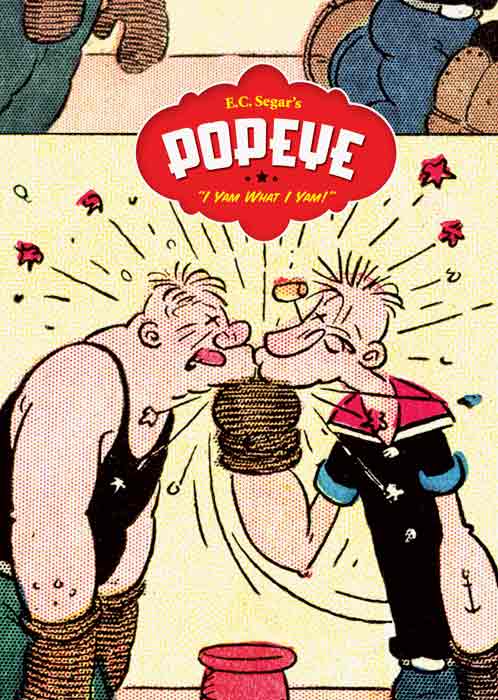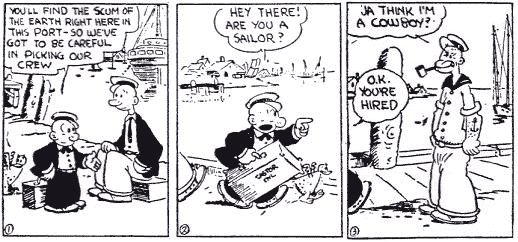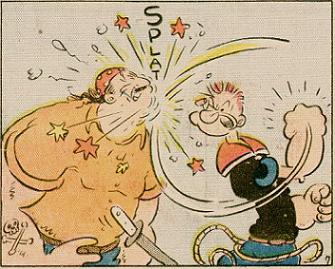
One day in 1929 a peripheral character popped up in a panel of E. C. Segar’s newspaper comic strip Thimble Theater and proceeded to take it over. His name was Popeye. Below — his first appearance:

Thimble Theater started out as a parody of popular melodrama, but neither parody nor melodrama could contain the anarchic imagination of Segar. His world was invaded
by supernatural elements, did not conceive of drawing clear distinctions between good and evil, and relished too plainly the energy of rambunctious physical violence. It was rather closer in spirit to The Iliad than to The Perils Of Pauline.
Popeye at once seemed to offer a kind of sea anchor to Segar’s roiling, restless
sensibility. Popeye was ever ready to dispense violence, in his
practical, unemotional way — as just another job, like hauling
anchor. He’d obviously been around the world a few times —
nothing surprised him, or at least not for long. He was never
heroic but always useful (a far cry from the righteous protagonist he later
became in the Fleischer animated cartoons.)

Seen through Popeye’s eyes, Segar’s world made sense — or rather its lack of sense didn’t seem too disturbing. With Popeye at the helm, Thimble Theater sailed
on its eccentric way until Segar’s death in 1938, becoming one of the great, dark comic
works of American culture. Popeye was eventually toned down and conventionalized as his adventures became addressed more and more to kids, but the real character is now available once again in a series of reprints of the original comic strip being issued by Fantagraphic books.
In well-printed, oversized volumes, the first of which is now out, we
can encounter him as he was — part Odysseus, part Achilles . . . the
eye of a perfect existential storm.
